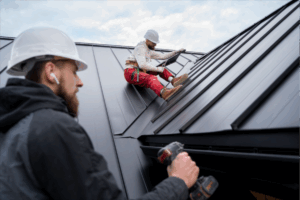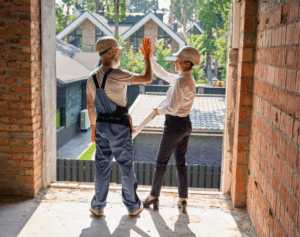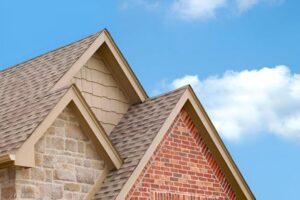Water damage is one of the most destructive and distressing incidents a homeowner in San Diego can face. Whether it’s a sudden pipe burst, an overflowing appliance, a leak from heavy rain, or even flood damage from a rare storm, the aftermath can be devastating. Beyond the visible destruction, water quickly permeates materials, fostering mold growth, compromising structural integrity, and creating an unhealthy indoor environment. In San Diego’s relatively mild but sometimes humid climate, prompt action is not just advised—it’s critical to mitigate long-term damage and prevent secondary issues like rampant mold.
This comprehensive guide provides San Diego homeowners with a vital step-by-step action plan for emergency water damage restoration. We’ll walk you through the immediate measures to take to minimize loss, discuss crucial mold prevention strategies,
The Critical First Hour: Immediate Steps After Water Damage
When water damage strikes, time is your biggest enemy. Rapid response is key to minimizing damage and reducing restoration costs.
Step 1: Ensure Safety & Identify the Source (If Safe)
Prioritize Safety: First and foremost, ensure the safety of everyone in the home.
Electricity: If the water is near electrical outlets, appliances, or if the extent of flooding is significant, turn off the main power supply to your home at the circuit breaker. Do not walk through standing water if power is on.
Gas: If you smell gas, hear a hissing sound, or suspect a gas line may be compromised, turn off the main gas supply and evacuate immediately, then call your gas company.
Identify & Stop the Source: Once safe, locate the source of the water and stop it. This might mean:
Turning off the main water supply valve to your home (usually outside or in a utility area).
Turning off the water supply valve to a specific appliance (e.g., washing machine, dishwasher, toilet).
Plugging a leaking roof with a tarp (from the exterior, only if safe to do so).
Step 2: Contact Your Insurance Company (Immediately)
Prompt Notification: Notify your homeowner’s insurance provider immediately. The sooner you report the damage, the smoother the claims process is likely to be.
Document Everything: Take extensive photos and videos of the damage before any cleanup begins. Document the source of the water, affected areas, and damaged items. This visual evidence is invaluable for your claim. Keep a detailed log of all communication with your insurance company.
Step 3: Call a Professional Water Damage Restoration Company (Like Smart Construction)
Don’t Delay: This is crucial. Water damage requires specialized equipment and expertise that most homeowners don’t possess. Professional restoration companies respond 24/7.
Why Professionals? They have industrial-grade extractors, dehumidifiers, air movers, and moisture meters to thoroughly dry affected areas, prevent mold, and identify hidden moisture. They are trained in proper remediation techniques.
Summary of Immediate Actions:
Action | Priority | Notes |
Ensure Safety (Electricity/Gas) | Critical | Turn off power/gas if any doubt. |
Stop Water Source | Critical | Locate and shut off valves or main water supply. |
Contact Insurance | High | Document damage before cleanup for claim. |
Call Professional Restorers (Smart Construction) | High | They have specialized equipment and expertise. |
Remove Valuables/Elevate Furniture | Medium | Protect belongings from prolonged water exposure. |
Mop/Blot Standing Water (Minor only) | Medium | Do not use regular vacuums or attempt major extraction yourself. |
Ventilate (Carefully) | Low | Be cautious about introducing outdoor humidity. |
The Science of Water Damage and Mold Prevention in San Diego
Water damage creates ideal conditions for mold growth: moisture, organic material (wood, drywall, fabric), and moderate temperatures. In San Diego, where temperatures are mild year-round, mold can proliferate rapidly, often within 24-48 hours.
Why Mold is a Concern: Mold not only causes unpleasant odors and structural damage but can also trigger serious health issues, including respiratory problems, allergies, and skin irritation.
Professional Drying is Key: Air drying with fans alone is rarely sufficient. Professional water damage restoration companies use specialized equipment to:
Extract Water: High-powered extractors remove vastly more water than vacuums.
Dehumidify: Industrial dehumidifiers remove moisture from the air, preventing mold growth and drying materials quickly.
Air Movers: Strategically placed air movers (fans) create airflow to accelerate evaporation from wet surfaces.
Moisture Meters: Crucial for detecting hidden moisture within walls, subfloors, and insulation, ensuring thorough drying and preventing unseen mold.
Without this comprehensive drying process, hidden moisture can lead to persistent mold issues and costly future repairs.
The Water Damage Restoration Timeline
The timeline for water damage restoration varies depending on the extent of the damage (Categories and Classes of water damage determine severity) and the response speed.
Phase | Description | Typical Duration |
Emergency Response & Assessment | Initial inspection, water extraction, safety measures, damage assessment. | 12-24 hours |
Drying & Dehumidification | Placement of air movers, dehumidifiers; ongoing monitoring of moisture levels. | 3-7 days |
Cleaning & Sanitization | Cleaning of affected contents, structural elements; mold remediation (if needed). | 1-3 days |
Repair & Reconstruction | Replacing damaged drywall, flooring, painting, structural repairs. | Varies (days to weeks/months) |
Note: These are estimates. Severe damage or undetected moisture can extend the timeline.
Conclusion
Facing water damage in your San Diego home is a daunting experience, but prompt, decisive action and professional assistance can make a dramatic difference in the outcome. From immediate water extraction and thorough drying to proactive mold prevention and seamless insurance coordination, the expertise of a professional water damage restoration company is indispensable. Don’t underestimate the hidden dangers of moisture or attempt to tackle extensive water damage alone.
At Smart Roofing and Restoration, we understand the unique challenges San Diego homeowners face when disaster strikes. Our highly trained and certified water damage restoration specialists are available 24/7 to respond to your emergency. .
Is your San Diego home impacted by water damage? Don’t wait – immediate action saves time, money, and prevents mold. Contact Us for emergency water damage restoration team for rapid, reliable service and comprehensive restoration!
Frequently Asked Questions (FAQs)
What are the absolute first steps I should take if I have water damage in my San Diego home?
First, prioritize safety by turning off electricity to affected areas and, if applicable, the main water supply to your home. Then, immediately contact your homeowner’s insurance provider to report the damage and take extensive photos/videos for documentation. Finally, call a professional water damage restoration company like Smart Construction right away.
How quickly can mold start to grow after water damage in San Diego's climate?
Mold can begin to grow rapidly, often within 24 to 48 hours after water damage occurs, especially in San Diego’s mild and sometimes humid climate. This emphasizes the critical importance of immediate water extraction and professional drying to prevent widespread mold contamination.
Will my homeowner's insurance cover water damage restoration in San Diego?
Most standard homeowner’s insurance policies cover water damage that is sudden and accidental (e.g., burst pipes, appliance malfunctions, sudden leaks). However, damage from natural floods (like rising rivers or storm surges) typically requires a separate flood insurance policy. Always review your specific policy and notify your insurer immediately.
Can I dry out my home myself after significant water damage with just fans?
For significant water damage, relying solely on household fans is rarely sufficient. Professional water damage restoration companies use industrial-grade air movers, powerful dehumidifiers, and moisture meters to ensure all hidden moisture within walls, subfloors, and structural elements is thoroughly removed. Incomplete drying can lead to hidden mold growth and ongoing structural issues.
What is the typical timeline for professional water damage restoration, excluding major repairs?
The initial emergency response, water extraction, and primary drying phase typically take 3-7 days, depending on the severity of the water damage. This stage focuses on removing moisture and preventing mold. Any subsequent repair and reconstruction work (e.g., replacing drywall, flooring) would follow this, and that timeline can vary significantly based on the extent of the damage.






